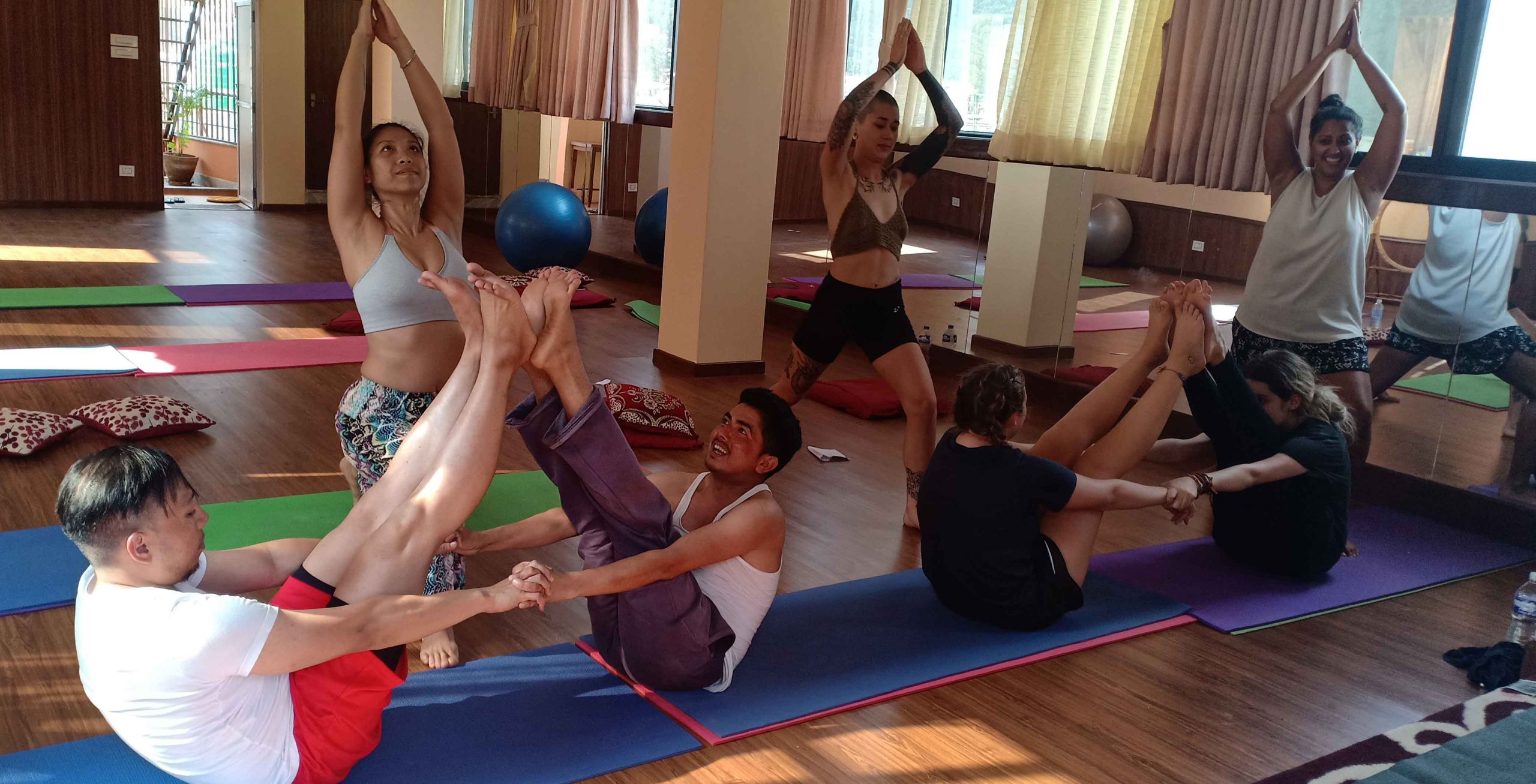Ashtanga Yoga –Foundational For GOAL
29 Jan 2020 HYN Himalayan Yoga Academy

By Swami Yog Subodh – School of Ashtanga Yoga – Himalayan Yoga Academy
“Om Patanjalaye Mahamunaye Namah”
Ashtanga Yoga is Ashta Saadhanaa formulated by Great Maharshi Patanjali in Yoga Darshan (Philosophy), the first Sacred and Pure text of Yoga. Paatanjal Yoga Darshana is one of the Darshana out of Shata Darshana. In Paatanjal Yoga Darshan, there are 195 verses and divided into four chapters. Under second Chapter named Saadhanaa Paada, Ashtanga Yoga is explained. In general, Ashtanga Yoga is considered and viewed by public, even modern Instructors as a type of Yoga.
In fact, this is not true; Ashtanga Yoga is itself fullness of Yoga, totality of Yoga because it is summarized or modified version of Yogic messages partially underlined in different Vedic texts or epics. If we go in deep sense into this, everything for true life has been patterned very well.
On the initiation of this Darshana , how beautifully initiated by Patanjali as “Athayogaanushaanam” PYD 1.1 that means now the discipline of yogic life begins; instantly, the definition of Yoga “Yogashchittavrittinirodhah” PYD1.2.has been given and rest 193 verses are well formulas for Kaivalya.
The Yoga, the Sadhana of Yoga fructifies in liberation and onwards Kaivalya through Vivekakhyati – the spiritual wisdom that comes from Yoga. Through this we are able to differentiate the soul and non-soul, the eternal and the transient, the pure and the impure.
The word ‘Ashtanga’ is Ashta + Anga; Ashta stands for eight and Anga stands for Organ or Limbs that means Eight Limbs of Yoga or Eight fold path of Yoga.
“Yama-Niyamasana-pranayama-pratyahara-dharana-dhyana-samadhayo-ashtavabgani”. PYD 2.29
They are: Yama ( Social Ethics), Niyama ( Self ethics), Aasana ( Body ethics), Pranayama ( Breath ethics), Pratyahara ( Mind ethics), Dharana ( Attitude ethics), Dhyana ( wisdom ethics), Samadhi ( Intelligence ethics).
Fundamentally Yoga has two parts: Bahiranga (External) Yoga and Antaranga (Internal) Yoga.
In Ashtanga Yoga, first four limbs (Yama, Niyama, Aasana, Pranayama) are Bahiranga Yoga, fifth ‘Pratyahara’ is mid-path or Pula (Bridge) and last three ( Dharana, Dhyana, Samadhi) are Antaranga.
It contents all the aspects of Yoga, less or more, directly or indirectly, superficially or deeply. It is ocean, how deep, nobody can see, only can realize. If we go in core, we can find all the paths, e.g. Ethical, Physical, Mental, emotional, social, psychological, and spiritual.
The Ashtanga Yoga is meant to remove all the defects in the mind, to annihilate these enemies of mind and also to give the knowledge of discrimination in that immaculate, pure mind through Yoga or Samadhi. Ashtanga Yoga is the means for removing the impurities and attaining wisdom. The flame of wisdom burns to attain the highest, ultimate knowledge, the discrimination between the transient and the eternal, keep us free from all sorts of pains, bondage and turbulence.
